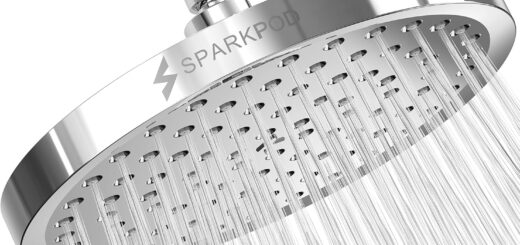Home Smoke Alarms: The Definitive Buying Guide
Finding the right smoke alarm can be a daunting task. We’ve done the research for you, selecting these models based on expert reviews, proven sensor technology, essential safety features, and their current availability. This guide is divided into two clear categories: alarms that offer advanced smart home integration and those that provide straightforward, highly reliable detection, allowing you to find the perfect fit for your home.
Best for Smart Home Integration
These alarms are for the homeowner who values remote monitoring, app-based controls, and integration with a connected home ecosystem.
X-Sense Smart Smoke & CO Detector Combo (SC07-WX)

- Why It Made the List: This X-Sense model delivers a comprehensive suite of smart features. It combines smoke and CO detection with a direct Wi-Fi connection, allowing it to send real-time alerts for emergencies, low batteries, and faults directly to the X-Sense Home Security app without needing a separate hub. Its built-in LCD screen provides at-a-glance information about CO levels, making it a top choice for those who want detailed information and remote control.
- Key Specifications:
- Sensor Types: Photoelectric (Smoke), Electrochemical (CO)
- Power Source: Replaceable CR123A Lithium Battery
- Smart Features: Wi-Fi connection, real-time app notifications, device sharing, CO level history
- Additional Features: LCD displays CO levels (30–999 ppm), test/silence button, 85dB alarm
Kidde Smart Smoke and Carbon Monoxide Detector

- Why It Made the List: This model from Kidde masterfully blends proven sensor technology with flexible smart features. It provides both a traditional siren and voice alerts that specify the danger. While it offers Wi-Fi connectivity and support for Alexa and Google Home, app use is not required, making it an excellent choice for users who want top-tier protection with the option of smart integration.
- Key Specifications:
- Sensor Types: Photoelectric (Smoke), Electrochemical (CO)
- Power Source: 10-Year Sealed Battery
- Smart Features: Wi-Fi enabled, smartphone notifications, Amazon Alexa and Google Home support
- Additional Features: Voice alerts, CO detection, designed to minimize false alarms
Best for Straightforward, Reliable Detection
These alarms forgo smart features in favor of focusing on the core mission: detecting fires as effectively as possible with minimal fuss.
First Alert SM210 10-Year Smoke Alarm

- Why It Made the List: This model is the epitome of “set it and forget it” reliability. It combines a highly effective photoelectric sensor—great for reducing nuisance alarms from cooking—with a 10-year sealed battery that lasts the entire decade-long lifespan of the alarm. There are no low-battery chirps to worry about, making it a maintenance-free choice for straightforward, essential protection.
- Key Specifications:
- Sensor Type: Photoelectric
- Power Source: 10-Year Sealed Lithium Battery
- Smart Features: None
- Additional Features: Test/silence button, end-of-life signal, tamper-resistant mount
First Alert SCO5CN Combination Smoke and Carbon Monoxide Alarm

- Why It Made the List: This alarm is a workhorse that delivers reliable, two-in-one protection against both smoke and carbon monoxide at an exceptional value. It uses a photoelectric smoke sensor, which is effective at reducing nuisance alarms from cooking, making it a great choice for placement in hallways near kitchens. Its simple, battery-powered design and easy-access battery drawer make installation and maintenance effortless.
- Key Specifications:
- Sensor Types: Photoelectric (Smoke), Electrochemical (CO)
- Power Source: 2xAA Batteries
- Smart Features: None
- Additional Features: Test/silence button, end-of-life signal, easy-access battery drawer
Models at a Glance
| Feature | X-Sense SC07-WX | Kidde Smart | First Alert SM210 | First Alert SCO5CN |
|---|---|---|---|---|
| Image |  |
 |
 |
 |
| Sensor(s) | Photoelectric, Electrochemical | Photoelectric, Electrochemical | Photoelectric | Photoelectric, Electrochemical |
| Power | Replaceable Lithium | 10-Year Sealed | 10-Year Sealed | 2xAA Batteries |
| CO Detection | Yes | Yes | No | Yes |
| Smart Features | App & Voice Alerts | App & Voice Alerts | None | None |
| Est. Price | ~$45 | ~$50 | ~$19 | ~$28 |
Understanding the Basics
In a home fire, every second is critical. Choosing the right smoke alarm requires understanding a few key technologies. This brief overview will help you make an informed decision.
- Sensor Types: There are two main types. Photoelectric sensors are best at detecting slow, smoldering fires, while Ionization sensors are quicker to detect fast-flaming fires. For the most complete protection, experts recommend using both technologies, either through separate units or a single Dual-Sensor alarm.
- Power Source: Hardwired alarms connect to your home’s electricity and have a battery backup. Battery-operated alarms can be installed anywhere. Many now come with a 10-Year Sealed Battery that lasts the entire lifespan of the alarm, eliminating the need for yearly battery changes.
- Smart Features: Modern alarms can connect to your home’s Wi-Fi to send alerts directly to your smartphone, letting you know about a fire or low battery no matter where you are. Many also feature wireless interconnection, so when one alarm sounds, they all sound.
- Combination Alarms: For convenience and comprehensive safety, many alarms also include a sensor for Carbon Monoxide (CO), an invisible, odorless, and poisonous gas.
Installation and Maintenance Guide
Choosing the right alarm is only the first step. Proper placement, installation, and maintenance are essential for home safety.
Placement Guidelines
- Install at least one alarm on every level of your home, including the basement.
- Install an alarm inside every bedroom and in the hallway directly outside of sleeping areas.
- On ceilings, place alarms near the center of the room. On walls, place them 4 to 12 inches from the ceiling.
- Avoid placing alarms in kitchens or bathrooms, as cooking fumes and steam can cause false alarms.
Testing and Maintenance
- Test Weekly: Press and hold the “Test” button on each unit until the alarm sounds.
- Clean Yearly: Gently vacuum the exterior of your alarms with a soft brush attachment to prevent false alarms from dust.
- Replace Every 10 Years: All smoke alarms expire. Replace every unit in your home every 10 years. Write the installation date on the back of your new alarm to keep track.


